A Visit From B-17G Sentimental Journey
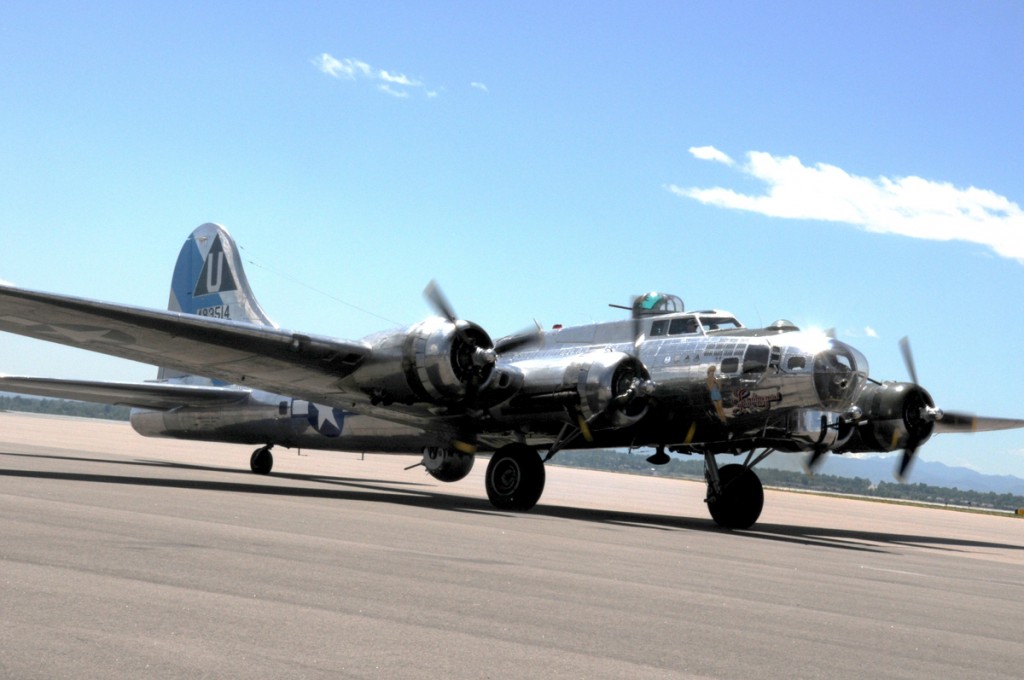
Recently we received a visited the Commemorative Air Force Arizona Wing's excellent B-17G Sentimental Journey on her local stop of the summer's tour. I've got to compliment the Wing on their restoration and care of their bird. We were busy getting on line and I didn't get an overall shot so I borrowed the above pic from Airport Journals.
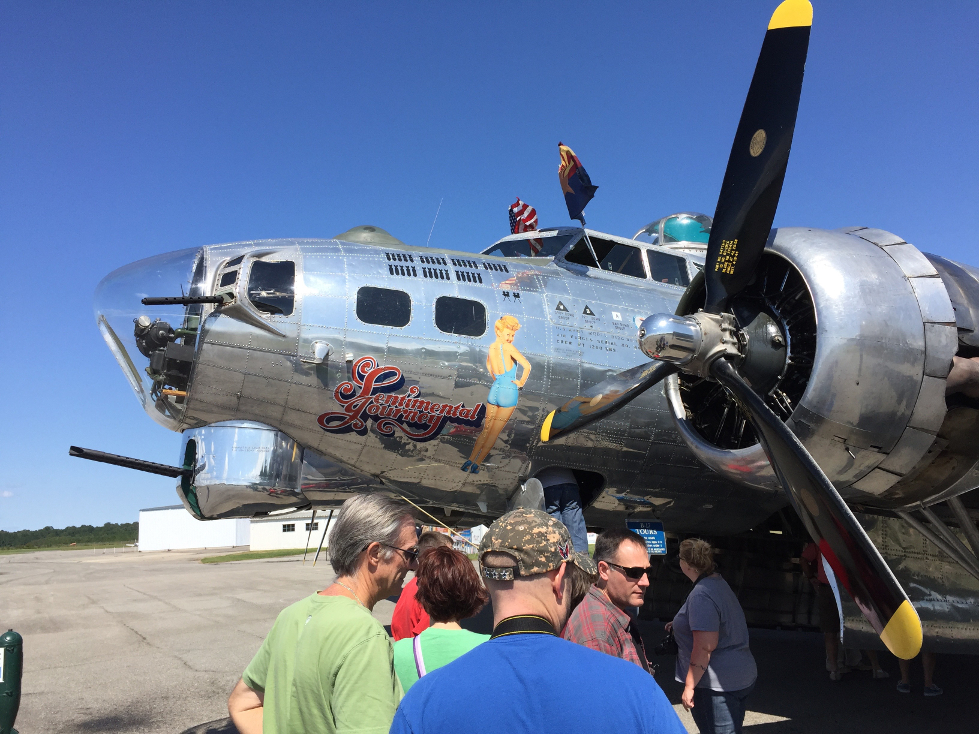
Here is the ships's nose and "chin turret" installation. Both this turret and the "Cheyenne" tail installation were by-products of the failed "YB-40" B-17 "escort fighter" experiment. The YB-40 plane might not have been a success but the armament devised to protect the plane made the next variant of the B-17, the B-17G, a much more survivable design. Up inside the landing gear bay is a large oil tank that must be continually replenished.
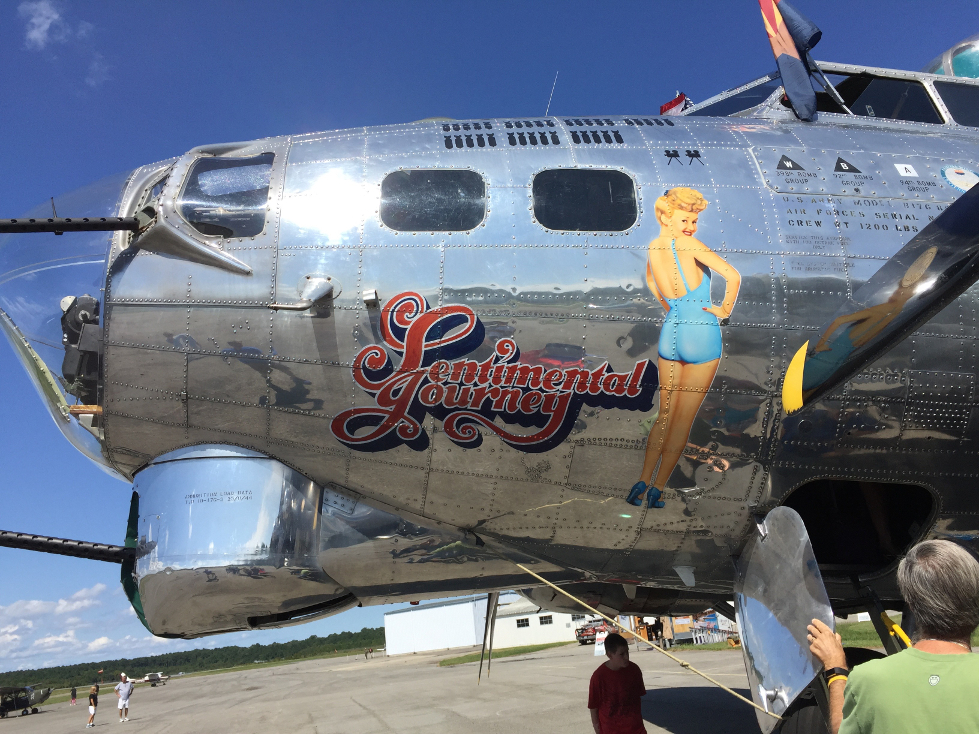
The nose art is a famous picture of Betty Grable that graced soldier's dwellings all over the world, except perhaps in Patton's army. The Arizona Wing went to great lengths to secure permission from Betty's widower before painting her on the nose. Notice the crew weight stenciled on the nose to Betty's right: "1200 lbs." That seems shrimpy for ten men! If you compare the "cheek" gun emplacement positions here and in the last pic, you'll see the the right cheek emplacement was offset aft to give space for the two occupants to access those guns without interfering with each other. The hatch at the bottom right of the pic is the entry point for crew members in the nose and is where we enter.
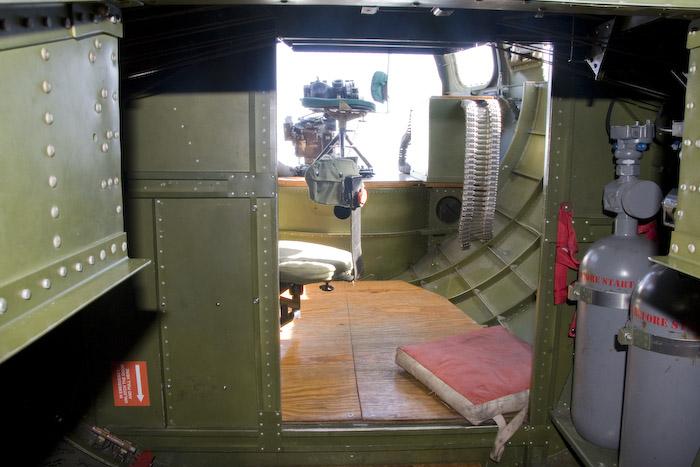
Photo courtesy Liberty Belle
Through the hatch and then to the left is access to the navigator's and bombardier's nose section.
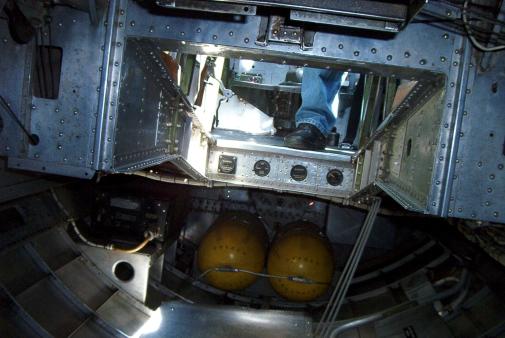
Photo courtesy Joe Barnett
To the right of the entrance hatch is a narrow vertical slot allowing access upwards and to the rear to the flight deck, where you emerge right behind the throttle stand and just in front of the top turret mechanism.

Photo courtesy Mark Fingar
This pic is shot through that slot looking upwards and aft at the turret mechanism. This plane is the only example I've seen with most of the top turret mechanism in place. They usually remove the works to make walking through the plane easier. My Liberty Belle photo essay gives more pics on the flight deck, bomb bay, and radio room.
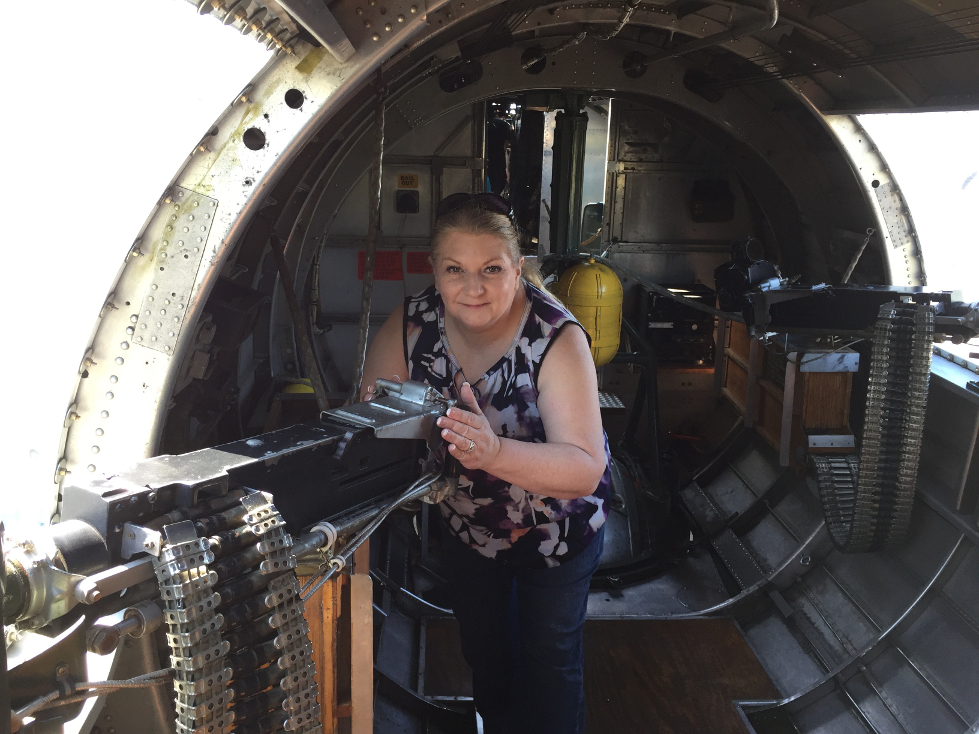
Here we've passed through the bomb bay and radio room and are in the waist facing forwards. My lovely wife, nicknamed "Stands With Fist*," tries out the port .50 Caliber waist machine gun. The "Ma Deuce" was designed by John Moses Browning. Many of these guns from WWII are still in service today. Notice that the starboard gun has a computing gun sight, designed to help the gunners overcome the airflow and prop wash. Right by the sunglasses on her head on the bulkhead behind her is the bail-out bell.
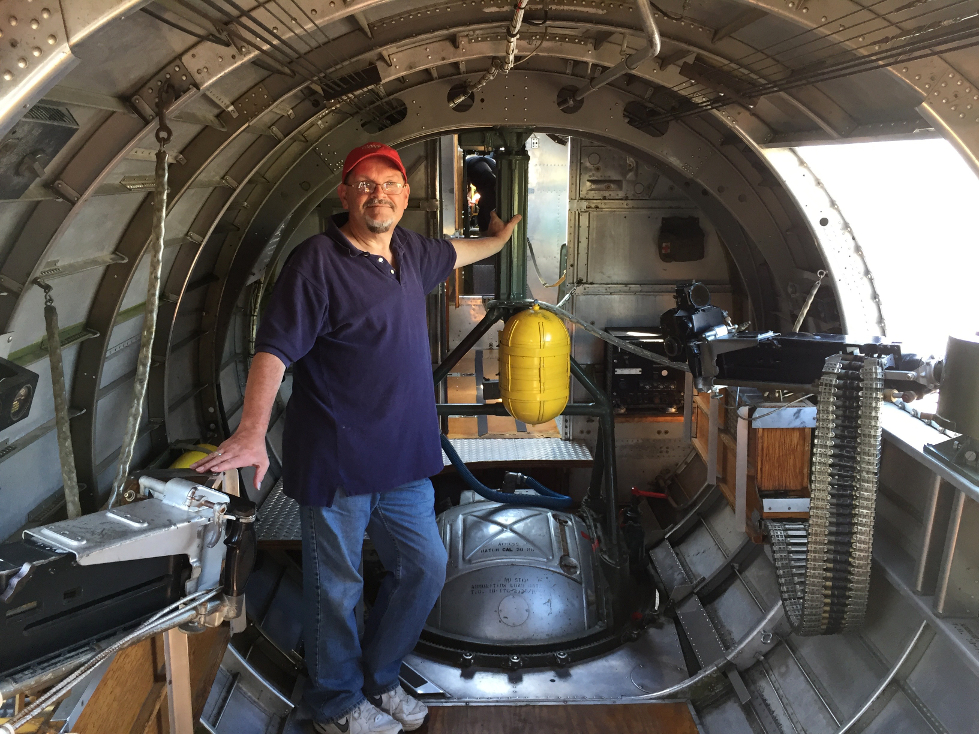
I'm leaning against the support for the Sperry Ball Turret with the gunner's yellow oxygen bottle beneath my hand. Here the ammo boxes for the turret have been removed to make it easier to step around. The hatch on the top of the ball turret is for loading the machine guns. The ammo boxes for the waist guns are still in place against the walls. Notice that the two waist windows are both enclosed to reduce chill and are offset to allow the gunners to work without interfering with each other. These were B-17G improvements. Note the control cables running above my head. Boeing considered hydraulic control to be a liability in combat so they designed the plane with all redundant mechanical and electrical systems. The only hydraulic system in the plane was for the wheel brakes.
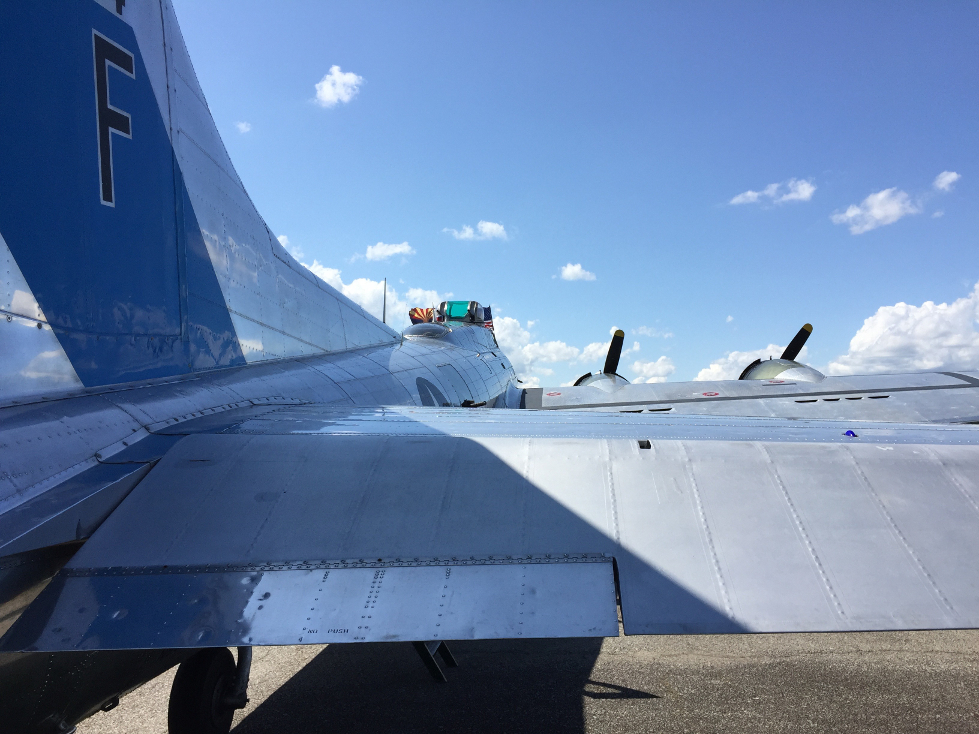
A vew over the horizontal stabilizer/elevator to the wing. Note the fabric-covered control surfaces and aluminum-covered trim tab. Also note the vents on the trailing surfaces of the wings to allow air flow to remove fuel fumes that seeped from the wing tanks inside. On the leading edge of the wing between the engines were the entrance vents. The twin top turret position with green plexiglass was operated by the flight engineer/crew chief. The nearer top position had a single .50 and was operated by the radio operator.
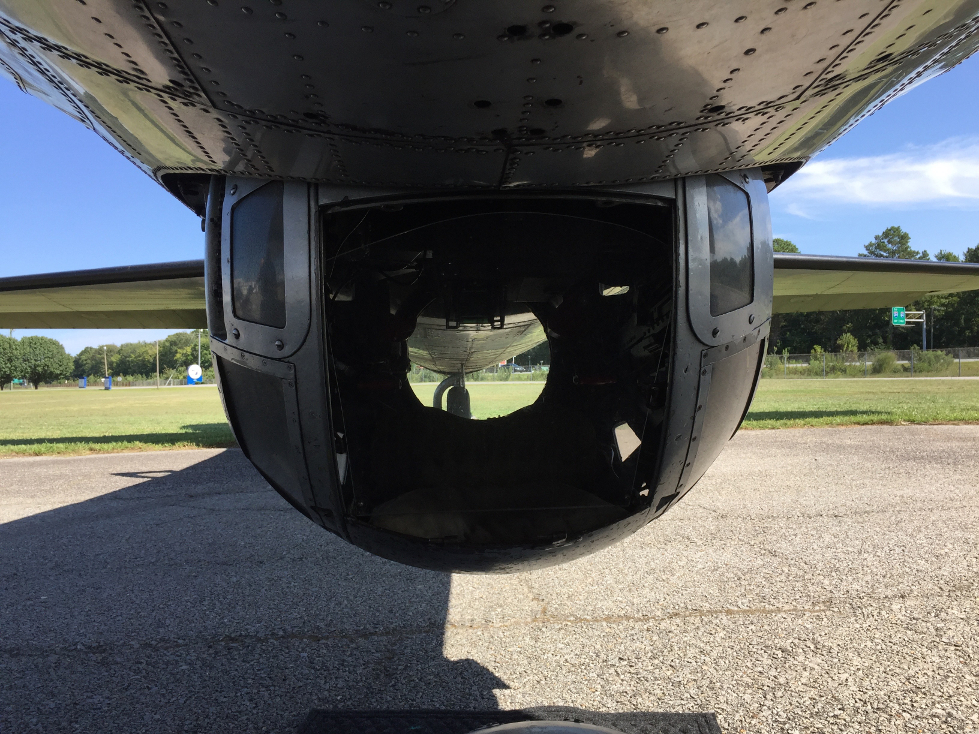
The Sperry ball turret. The gunner curled up inside and "flew" the entire ball turret to aim the guns. Despite many legends, ball turret gunners had the highest survival rate of all B-17 crewmen. We are looking through the exit hatch of the aft-facing turret, and then through the sight window to the tail wheel.
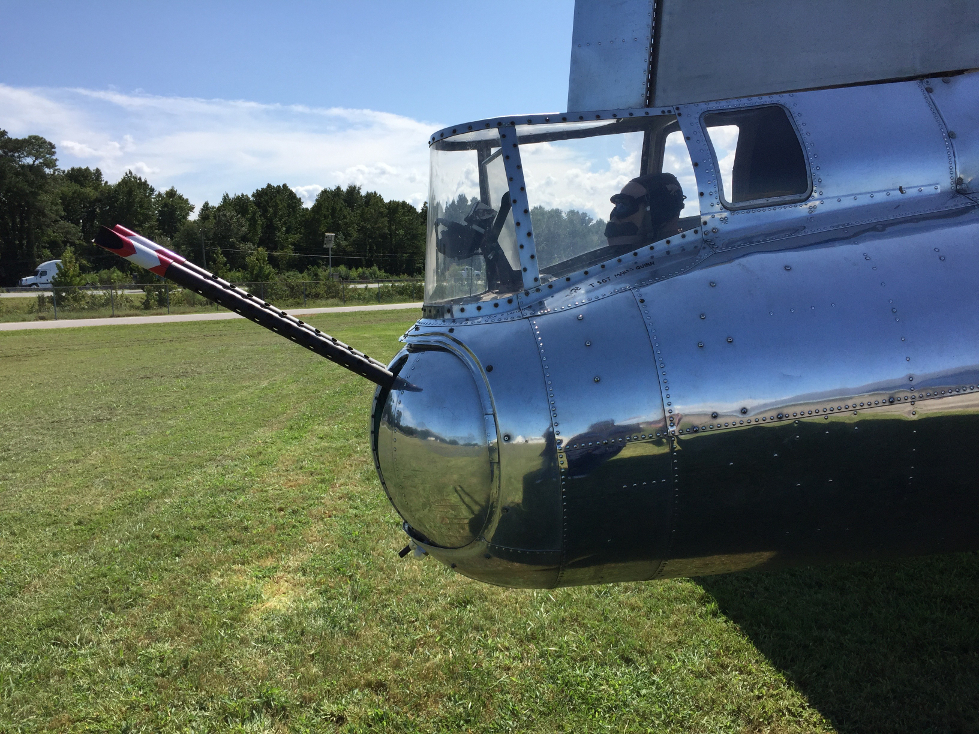
Tail gunner's "Cheyenne" tail gun turret. Previous B-17 tail emplacements offered much more restrictive gun movement and visibilty and were fatiguing to the tail gunner because he had no seat and had to kneel at his position. This emplacement addressed all those concerns and added a bicycle-style seat. There was a reflector sight and a large pane of bullet-resistant glass added as well. The position got its nickname because it was designed by the United Airlines Modification Center at Cheyenne, Wyoming, after the production runs of the B-17G were established. It would have slowed down the assembly lines to introduce this modification, so as the planes rolled off the various assembly lines at Boeing, Douglas, and Lockheed Vega, they were flown off to the United Airlines Modification Center where the entire tail cone was removed and this assembly was added as a unit. You can see the seam at the upper-right corner of the picture.
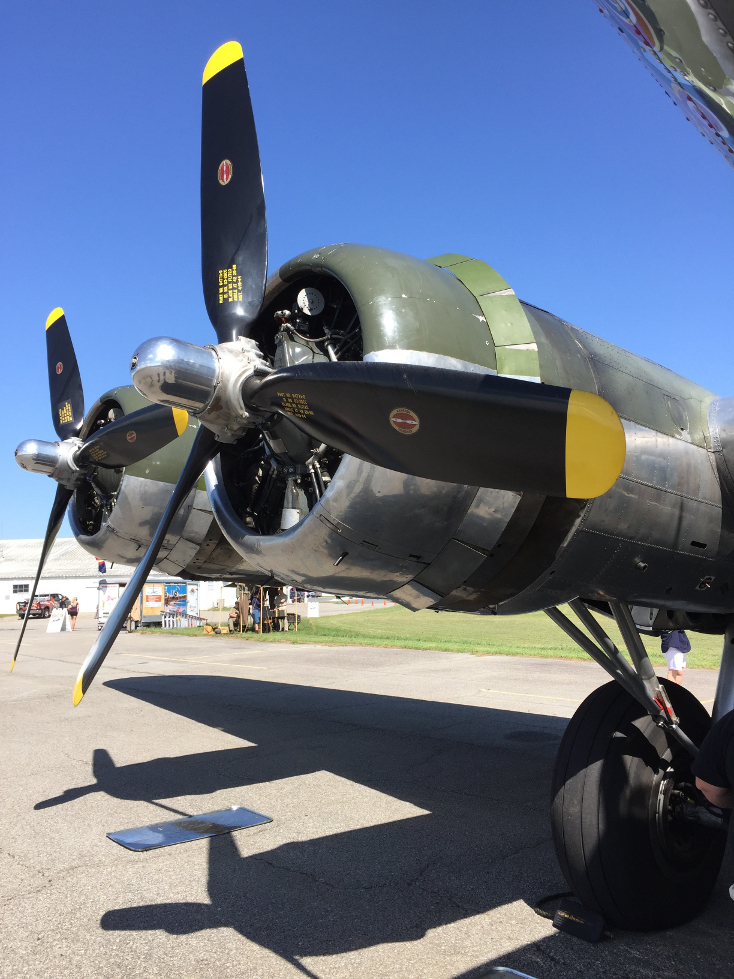
The starboard pair of 1200 horsepower, nine-cylinder Wright 1820-97 Cyclone turbo-supercharged radial engines with Hamilton Standard props. For scale, each prop blade is over five feet tall. Notice that the inboard tops of the nacelles are painted non-reflective green to prevent the sun from dazzling the crew. Also note the drip pans on the ground under under each of the engines to catch oil drips.
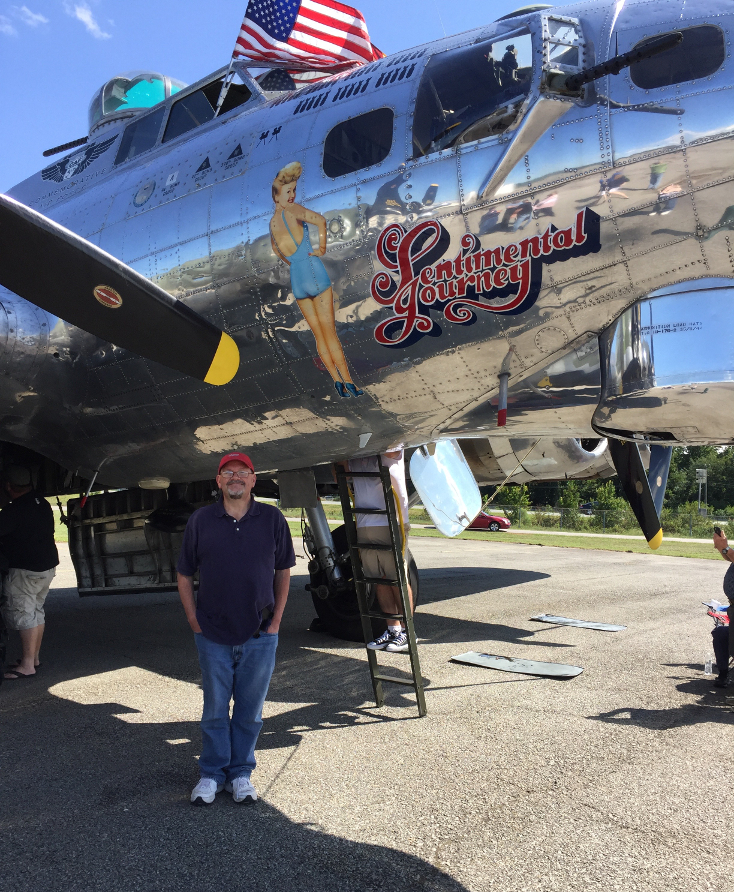
* A Dances With Wolves reference.
= =
=













